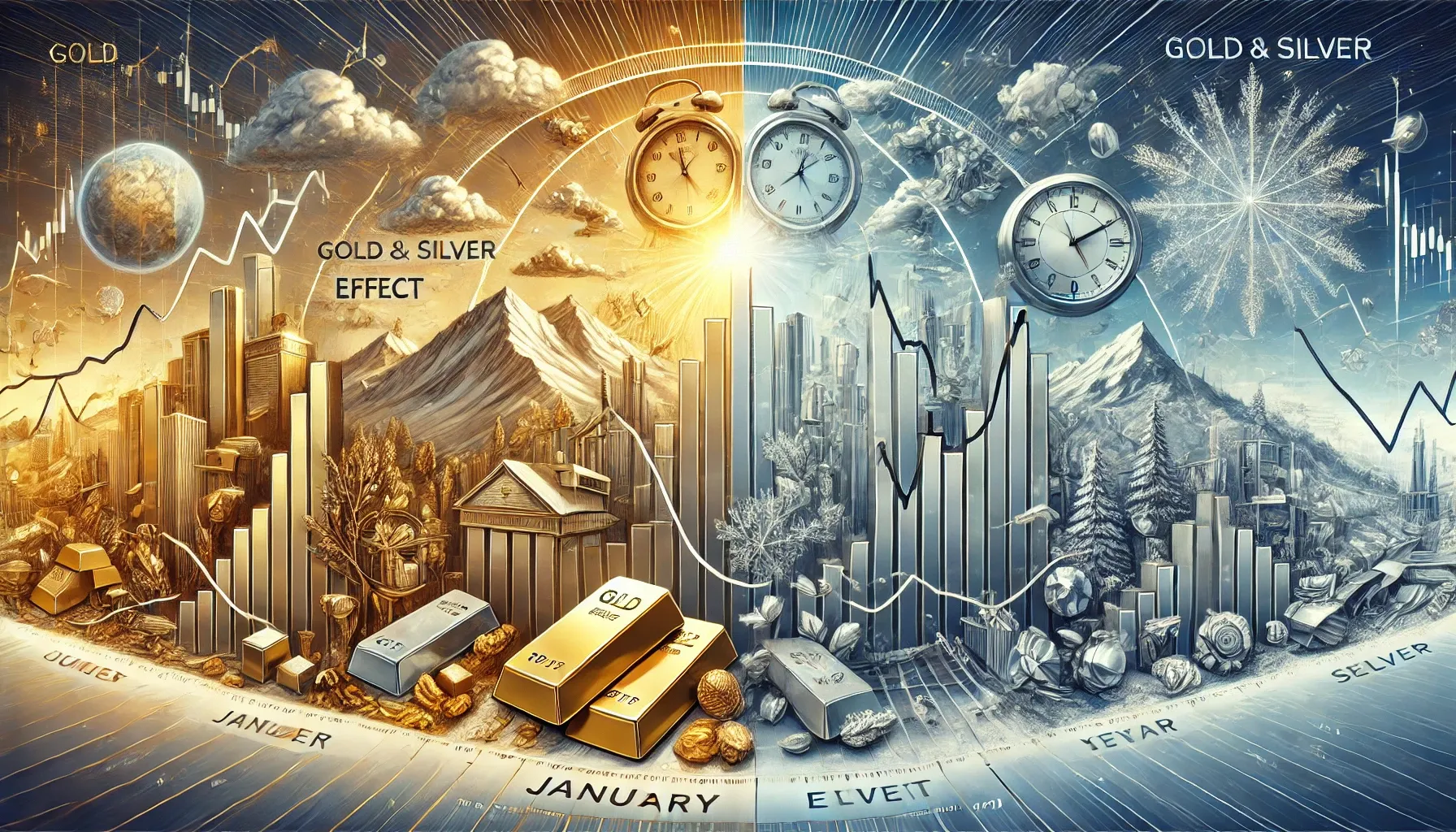
Investing in precious metals like gold and silver is a time-honored strategy for preserving wealth, hedging against inflation, and diversifying investment portfolios. However, timing your purchases can significantly impact your returns. While many factors influence the prices of gold and silver, including geopolitical events, economic data, and central bank policies, there are also seasonal trends that can guide your buying decisions. Understanding these trends can help you make more informed investment choices and potentially maximize your gains.
Understanding Seasonal Trends in Gold and Silver Prices
Seasonal trends refer to recurring patterns in asset prices that happen at specific times of the year. These trends are often driven by predictable factors such as holiday demand, economic cycles, and production schedules. In the case of gold and silver, certain months tend to see higher or lower prices based on historical data.
1. The January Effect
The "January Effect" is a well-known phenomenon in the financial markets, where asset prices tend to rise at the beginning of the year. This effect is also observed in the precious metals market. Historically, January has been a strong month for gold and silver prices, often due to a combination of factors, including:
- Renewed Investor Activity: After the holiday season, investors return to the markets with fresh capital, often leading to increased demand for gold and silver as safe-haven assets.
- Stock Market Performance: If the stock market experiences volatility or a decline in January, investors may flock to precious metals as a safer alternative, driving up prices.
- Global Economic Outlook: As the new year begins, investors reassess global economic conditions, and any signs of economic uncertainty or inflationary pressures can boost demand for gold and silver.
2. The Summer Doldrums
The summer months, particularly June and July, are typically a quieter period for gold and silver prices. This phenomenon, often referred to as the "summer doldrums," is characterized by lower trading volumes and subdued price movements. Several factors contribute to this trend:
- Lower Trading Activity: Many traders and investors take vacations during the summer months, leading to reduced trading activity and, consequently, less volatility in the markets.
- Seasonal Slowdown: The summer is generally a slow period for economic activity, which can result in weaker demand for industrial metals, including silver.
- Pre-Harvest Season: In India, one of the world's largest consumers of gold, the demand for gold tends to slow down during the summer months before picking up again during the harvest season.
3. The Fall Rally
As summer comes to an end, gold and silver prices often begin to rally in the fall. This trend is driven by several factors, making September and October historically strong months for precious metals:
- Indian Wedding Season: India is one of the largest markets for gold, and the wedding season, which typically begins in late September and extends into the fall, drives significant demand for gold jewelry. This increased demand often leads to higher prices.
- Festive Season in India and China: In addition to weddings, the fall also coincides with important festivals in India (like Diwali) and China (like the Mid-Autumn Festival), during which gold is traditionally purchased as gifts and for investment purposes.
- Central Bank Purchases: Central banks often finalize their gold purchase programs in the fall, contributing to increased demand and supporting prices.
4. Year-End Rally
December is another strong month for gold and silver prices, often referred to as the "year-end rally." Several factors contribute to this trend:
- Holiday Demand: The holiday season, particularly in Western countries, sees increased demand for gold and silver jewelry as gifts, which can boost prices.
- Portfolio Rebalancing: At the end of the year, institutional investors often rebalance their portfolios, which may involve increasing allocations to gold and silver for diversification and risk management purposes.
- Geopolitical Uncertainty: The end of the year is often a time of heightened geopolitical tensions or economic uncertainty, leading to increased demand for safe-haven assets like gold and silver.
5. Buying Opportunities in Off-Peak Periods
While there are strong periods for gold and silver prices, savvy investors can also find buying opportunities during off-peak periods. For example, prices tend to dip during the summer doldrums and late spring, making these times potentially attractive for long-term investors looking to accumulate precious metals at lower prices.
Factors That Influence Seasonal Trends
While seasonal trends can provide valuable insights, it's important to remember that they are just one piece of the puzzle. Several other factors can influence gold and silver prices, including:
- Economic Data: Reports on employment, inflation, GDP growth, and other economic indicators can have a significant impact on precious metal prices.
- Central Bank Policies: Decisions by central banks, such as changes in interest rates or monetary policy, can drive demand for gold and silver as investors seek to hedge against currency devaluation or inflation.
- Geopolitical Events: Wars, political instability, and trade tensions can lead to increased demand for safe-haven assets like gold and silver, often overriding seasonal trends.
Conclusion
Understanding the seasonal trends in gold and silver prices can help investors make more informed decisions about when to buy these precious metals. While January, September, October, and December are historically strong months for gold and silver, there are also opportunities to buy at lower prices during the summer doldrums and late spring. However, it's crucial to consider other factors such as economic data, central bank policies, and geopolitical events when planning your investment strategy.
By combining an awareness of seasonal trends with a broader understanding of market dynamics, investors can better navigate the precious metals market and optimize their returns. Whether you are a long-term investor or a short-term trader, staying informed about these trends can help you stay ahead of the curve and make the most of your precious metals investments.
Another article you may like:
Invest in Junk Silver Coins: Affordable Pre-1965 90% Silver for Smart Precious Metal Portfolios
